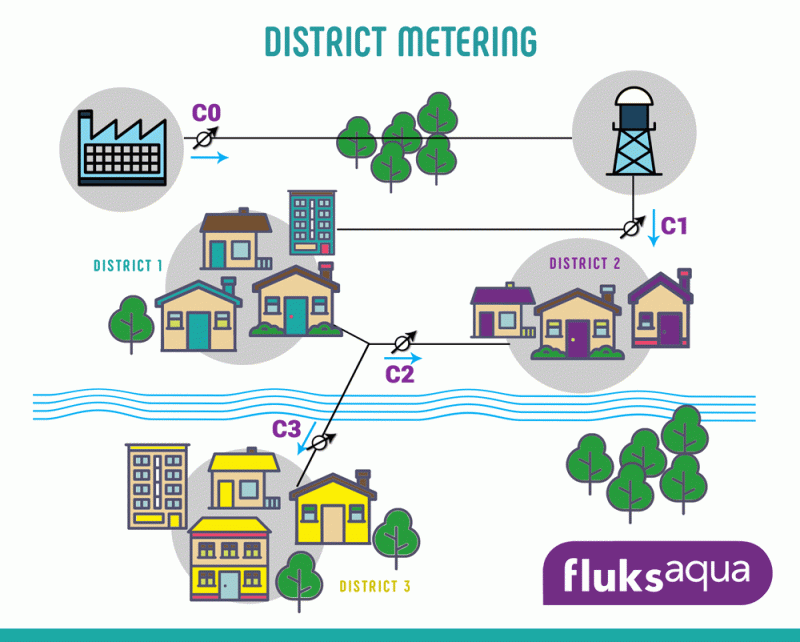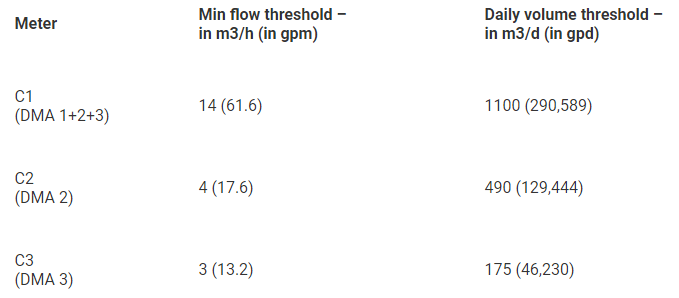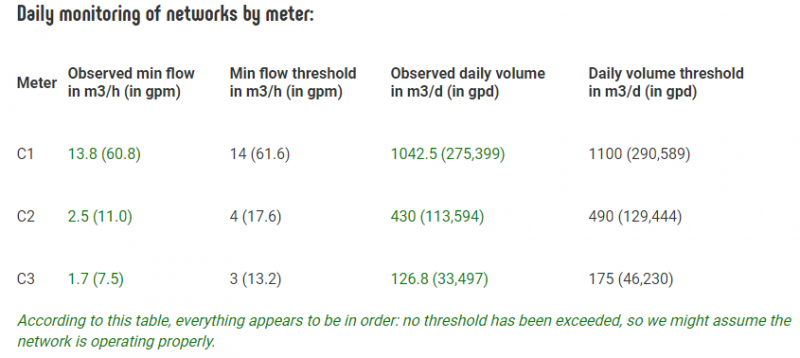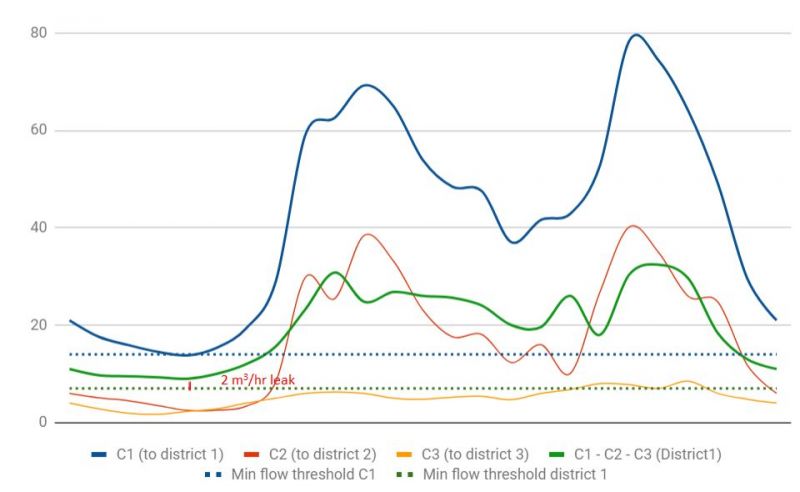Leak Detection: The Benefits Of District Metering
Published on by Water Network Research, Official research team of The Water Network in Academic
This article compares two common operating practices used to track network flows and volumes and demonstrates why district metering is more effective in detecting network leaks.
At first glance, it might seem cheaper and easier to monitor your network using data obtained solely from meters—usually this means minimum flows and volumes.
Let’s take the example of the network below, which is made up of three District Metered Areas (DMAs 1,2 and 3), each fed by a meter (C1, C2, C3).

The operator who is using meters to monitor water distribution will rely on prior knowledge of the network to assign thresholds for each one: 
After that, it is relatively simple to set up daily extraction of the raw data from the meters and to produce a table similar to this one: 
NETWORK MONITORING USING DISTRICT METERING
However, using a different calculation method, and looking closer, these values actually reveal a leak.
Let’s reduce the scope of our observation to DMA 1: C1 – C2 – C3.
The thresholds for DMA 1 are governed by this equation:
- Min flow threshold = 14 – 4 – 3 = 7 m3/h (30.8 gpm)
- Daily volume threshold = 1100 – 490 – 175 = 435 m3/d (114,915 gpd)

This time, we can detect a leak of 2 m3/h (8.8 gpm) and a daily excess volume of 50 m3/d (13,209 gpd)!

HOW DO YOU EXPLAIN THE DIFFERENCE?
It’s actually very simple: if we monitor meter by meter, DMAs 2 and 3’s good performances actually offset the ongoing deterioration in DMA 1. This tells us that monitoring per meter which consists in assigning thresholds meter by meter is too simplistic a method. This is borne out by the fact that the leak seen as of meter C1 went completely undetected!
WHY DO SO MANY OPERATORS CONTINUE TO MONITOR THEIR DISTRIBUTION NETWORK SOLELY BASED ON THE DATA OBTAINED FROM THEIR METERS?
Most likely it is because implementing a traditional monitoring method is faster and less complicated. Indeed performing calculations for each DMA with a typical SCADA requires hours of programming both to prepare the raw data for each meter with proper time steps and to define DMA equations in the SCADA. This often entails advanced proficiency with SCADA, which is not its primary function.
WHY SWITCH TO DISTRICT METERING?
As we saw, DMA monitoring is more accurate. In the scenario above, a leak volume of 50 m3/d (13,209 gpd) quickly gets us to a water loss of 5000 m3 (1,320,860 gallons) after 100 days—and much more as long as the leak continues to go undetected.
Obviously, the marginal cost of distributed water varies depending on the network, but whatever the starting point, water losses can end up costing operators thousands of dollars.
Given that reality, district metering becomes an attractive option despite the additional cost.
Until now the most widely used method has been to program DMAs into the SCADA. Often performed by an outside consultant, the operation is expensive at the time of initial implementation and has to be at least partially repeated every time the DMAs are updated.
Read more about water leak detection and the benefits of district metering at Fluksaqua
Media
Taxonomy
- Leakage Detection
- Leakage
- Leakage Reduction
- Meters